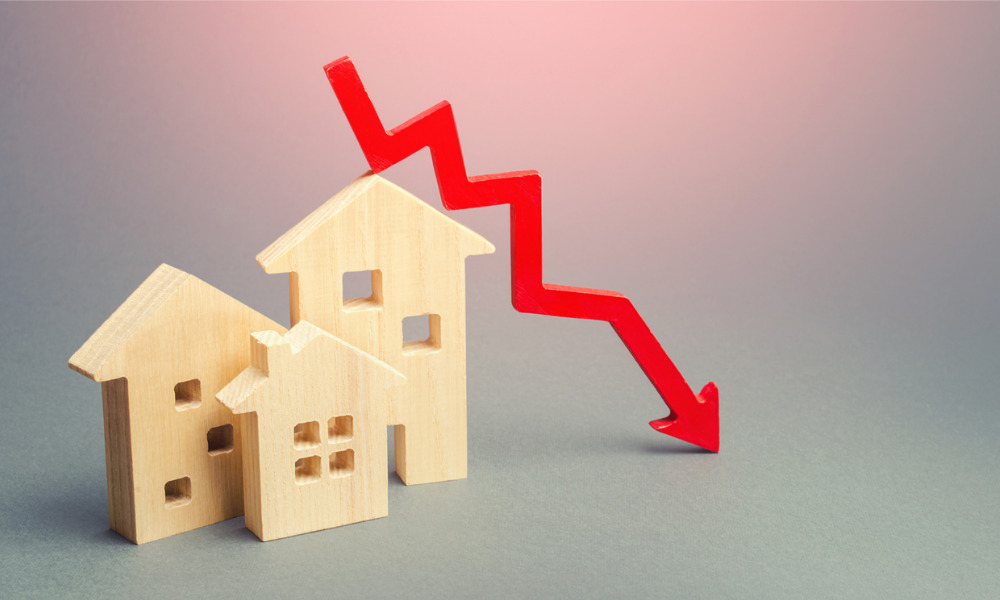Higher interest rates, lower sales volumes, and flatter house prices are forecast for the rest of 2022

Sales activity in New Zealand’s previously overheated property market began to show hints of a slowdown in mid-2021, which then became “genuinely weak” as the trend extended into the first quarter of this year. Higher interest rates, lower sales volumes, and flatter house prices, meanwhile, are forecast for the rest of the year after a weak start to 2022.
Read more: CoreLogic: New Zealand property market ends 2021 on a high
This was according to CoreLogic NZ’s latest Property Market & Economic Update.
At the end of Q1 2022, the total value of residential real estate reached $1.73 trillion, up from $1.72 trillion at the end of 2021, with mortgages secured against 19% of that value, and the other 81% household equity.
Kelvin Davidson, CoreLogic chief property economist, said many households would have to adjust their finances fairly quickly to keep pace with the doubling of mortgage rates and the country’s high household debt-to-income ratio.
“To be fair, the worst point for mortgage finance may already have been seen, given that CCCFA is set to be loosened, and some banks are reportedly relaxing in-house rules around debt-to-income ratio caps and the availability of low deposit finance,” Davidson said. “But it’s still going to be harder to get a new mortgage this year than it has been for some time, and there’s also a large refinancing wave to come through too, with about 50% of existing loans fixed but due to roll over this year. These borrowers will generally be facing a much higher repayment schedule when they refinance.”
Read next: CoreLogic reports patchy price falls across NZ suburbs
Davidson said property sales volumes in Q1 2022 are the weakest they’ve been in about a decade. The Omicron variant may have stalled property turnover temporarily, but the key drivers for the sales slowdown were fundamental and longer-lasting.
“Higher mortgage rates and reduced credit availability is having a significant impact on sales,” Davidson said. “We expect property market activity will continue to be subdued, with sales volumes perhaps declining by as much as 10% this year, and another 5% or so in 2023. This is best characterised as a slowdown, though, rather than a serious downturn.”
Property value growth rates have definitely slowed, with a mere 0.7% rise in the national average in March – the softest figure since values declined by 0.2% in August 2020. The quarterly increase of 3.6% was the smallest quarterly rise since 1.9% in the three months to October 2020, while the annual growth rate has also slowed to 23.4%, CoreLogic figures showed.
“It’s important to acknowledge these are still increases at the national level,” Davidson said. “But the momentum has certainly shifted, and some key areas saw values drop in March, including Hamilton, Wellington, Christchurch, and Dunedin. The rest of the year is likely to remain soft for property values too, as mortgage rates rise, credit remains tricky to secure, and buyers have more choice of listings. However, if unemployment stays low, we don’t anticipate significant or widespread falls in property values.”
Along with the slowdown in the housing market was a decline in mortgage lending activity, which has fallen year-on-year for the past consecutive six months, with February’s total of $5.7 billion down by $1.9 billion from the same period last year.
Davidson said a key driver of overall trends was the slowdown in lending to investors, but owner-occupiers have also cooled more recently too, especially with the 10% reduction in the low deposit lending speed limit on Nov. 1 to 10%.
There were also clear shifts in the composition of buyers in the property market in the first quarter of 2022. Most notable was among first-home buyers, who only had a 23% share of purchases across Q1 as a whole, and 21% in March. This was the lowest monthly share of this group since the second half of 2017, apart from April 2020, impacted by lockdown. Davidson said the abrupt shift began in January, reflecting November’s tightening of LVR rules and December’s CCCFA law changes.
Low mortgage rates, tight supply, and other common drivers of the post-COVID upswing in property values are no longer in play just as the total number of listings available increases due to a slowdown in sales activity.
Davidson said the next phase of the cycle will likely result in a sharp and widespread slowdown in property value growth.
“However, there is also likely to be some regional divergence, with some parts of NZ more vulnerable to falls in values than others, while some may actually see further growth,” he said. “There are many factors that will influence each region over the coming year or so. But parts of Canterbury certainly have affordability on their side, so could see further, albeit modest, growth. By contrast, many smaller markets in the central and lower North Island already look stretched, so could be poised to underperform.”



